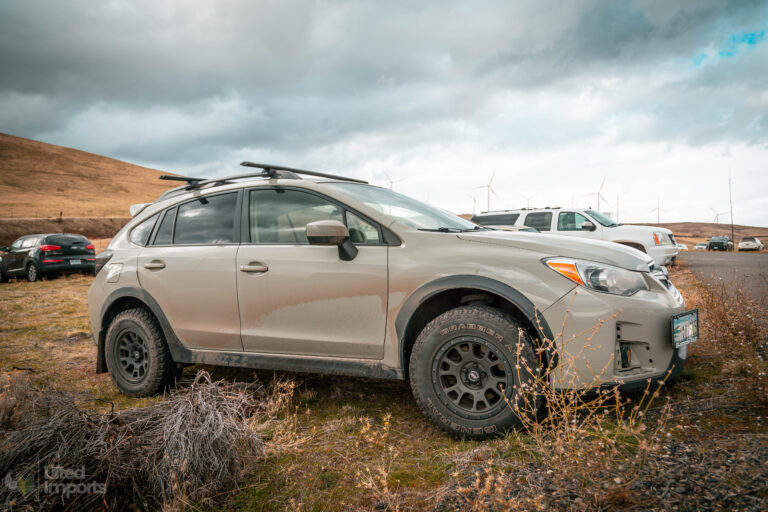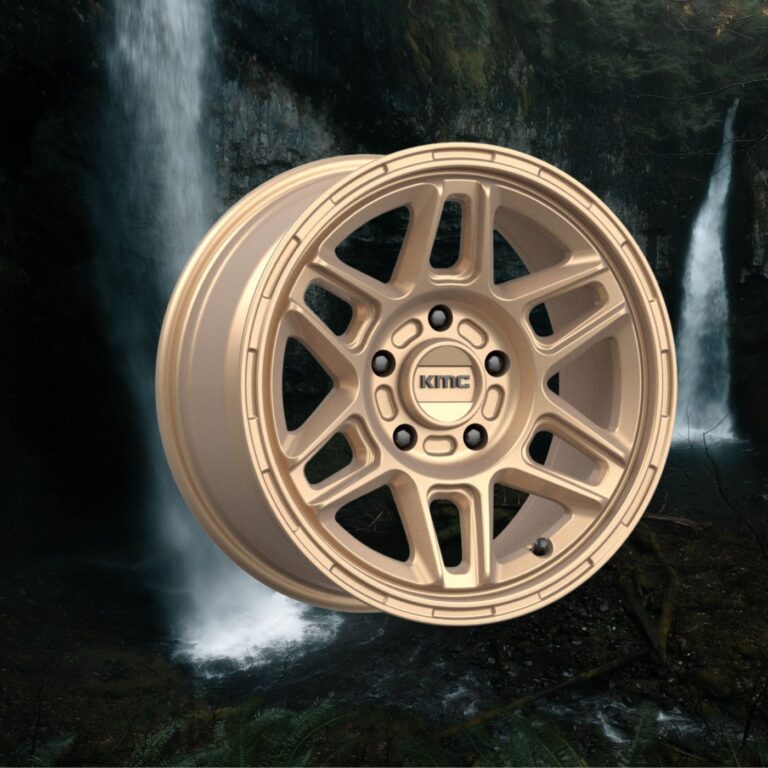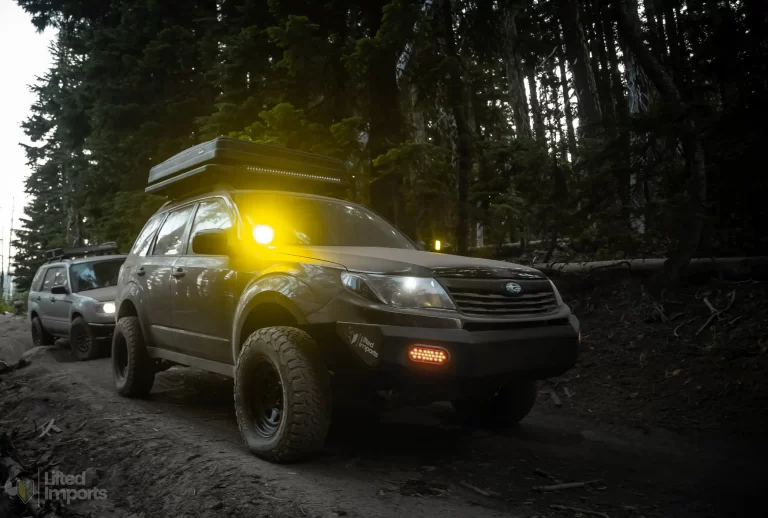
When people begin researching the process for lifting their Subaru, one of the biggest questions folks have is “how much will it affect my gas mileage?” The good news is that simply lifting your Subaru will have an almost negligible impact on your fuel economy. Most people report almost no change in their average MPG after installing a lift kit. But along with lift kits, many people install other things on their car that can definitely bring their fuel economy down drastically.
In this article we’ll explain the different things that can impact MPG, how to offset those factors, and we’ll share real numbers from our experience with lifting and modifying Subarus.
Table of Contents
Does a lift kit impact fuel economy?
When installed by itself, we’ve never had a noticeable change in MPG with lift kits. Lift kits weigh roughly 35-40 lbs. depending on your choice of parts. This weight has virtually no impact on the cars ability to burn fuel efficiently.
A lift kit will increase the ride height of the vehicle which can create additional drag as the car pushes through the air at higher speeds. But again, we’ve found the impact to be essentially zero.
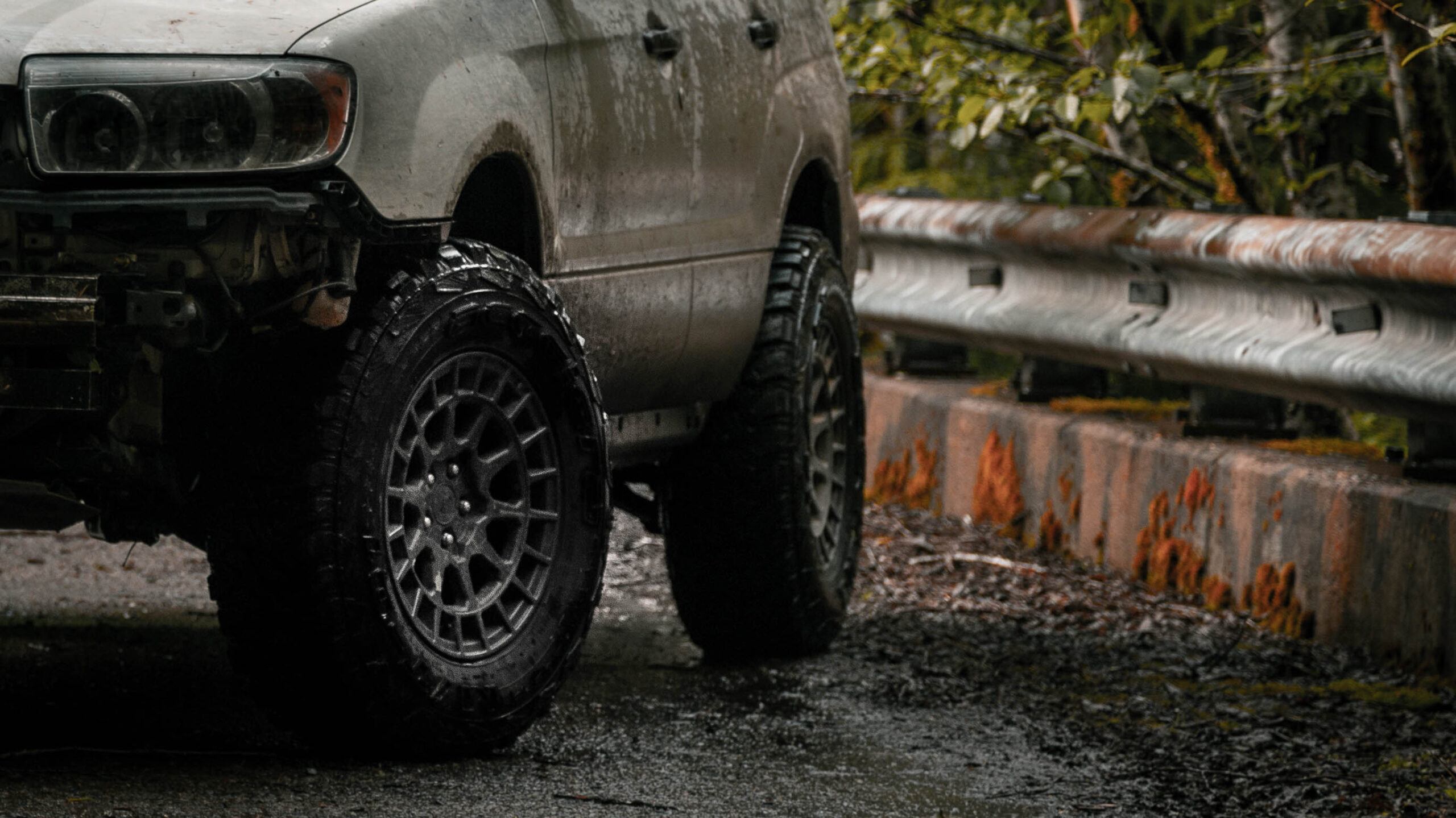
Wheels and tires: how they can affect MPG.
One of the first modifications that most people install after a lift kit is a set of aggressive off-road tires. Typically people will select a tire that is not only more aggressive, but larger in total diameter as well. This presents a couple of issues.
First, a heavier tire will add a substantial amount of unsprung weight to the vehicle (unsprung weight is defined as weight that is not supported by the suspension. Items like wheels, tires, brakes etc. are considered unsprung weight.) The stock Yokohama Geolandar G91F tires that come on the 2020 Crosstrek weigh roughly 25 lbs. The most common aftermarket tire that we see on lifted Crosstreks is the BFG KO2 which weighs in at about 36 lbs. That’s an 11 lb. weight gain on the outermost portion of the wheel/tire’s rotational mass.
After switching from the stock 215/65/16 tires on our 2006 Forester to a 235/75/15 mud terrain, we saw a drop from about 24 average MPG’s to roughly 22 MPG. This number obviously varies significantly based on driving habits and city vs hwy driving. These numbers drop substantially after a long day on the trails when we’re aired down going slow and using a lot of throttle.
When you first switch over to a larger tire, your gas mileage may look absolutely horrid. But don’t panic quite yet. Your speedometer and odometer are going to be inaccurate as you size up. In our case, we found that for every 93 miles driven on the odometer, we actually traveled about 100 true miles. We used a GPS tracker to calculate this and found this to be the average. So when you check your MPG, don’t forget to account for the extra mileage not represented on your dash.
Now that we have that out of the way, let’s talk about the ways that tires can affect your MPG and what tips you can follow to help alleviate this issue.
First, a larger off-road tire is usually going to have a bigger contact patch. This is good news on the trails. However, it creates additional rolling resistance which causing your engine and transmission to work harder to keep the vehicle moving.
Second, all-terrain and mud-terrain tires are designed with a heavier duty sidewall and overall carcass construction. This will help you avoid punctures and blowouts on the trail. However, it will add a large amount of weight to your vehicle’s drivetrain.
Third, a more aggressive and wider tire will have extra wind resistance. If your Subaru is lifted, more of the tire will be exposed to the oncoming air and create more drag. In addition, most people will opt for a wheel that has a lower offset – meaning that the tires can stick out past the fenders. People do this for extra stability on inclines and to help with larger tire fitment. However, it can cause your MPG to drop.
So what can you do when upgrading tires to retain as much gas mileage as possible?
Here’s our top 3 tips:
- Select a lightweight tire that won’t weigh down your vehicle too much. The 4 lightest AT tires on the market currently are the Firestone Destination AT2, the Goodyear Trail Runner AT, the Laufenn X Fit AT, and the Toyo Open Country AT3.
- Upgrade to a lighter performance “rally” wheel that will help offset some of the added weight. Our two favorite options are the the Black Rhino Boxer, and the Black Rhino Rumble wheels. They are both extremely light and durable. Not to mention they look pretty good.
- Try to keep the tires contained within the fenders. Don’t use excessive spacers or wheels with anything more than a +15mm offset. It doesn’t look as “cool” as having your tires sticking out 3 inches, but it is more fuel efficient and will cut down on the amount of debris your tires kick up.
Monitor the air pressure in your tires.
One simple way to preserve your fuel economy is to regularly check the psi in your tires. A basic $10 pressure gauge is all you need to keep track of your tires. Checking your tire pressure once a week and before long trips is a great idea. Look in the owner’s manual or on the inside of the driver’s side door for the factory recommended tire pressure.
In some cases, you’ll want to run a different air pressure than what is listed by the vehicle manufacturer. However, on a Subaru you typically won’t be too far outside of the stock size to make a huge difference. We generally stick with the factory specs for on-road use.
With a cheap pressure gauge and compact air compressor, you can keep your tires up to par and save your MPG. The Viair 88P is a good quality compressor for under $90 that fits easily in the trunk.
Avoid overdoing it with rooftop accessories.
After talking with multiple people, we found that one of the biggest impacts to MPG was an overpacked roof rack. In fact, one of our friends reported getting as little as 11mpg in his 2021 Crosstrek after loading his roof up with a cooler and a bunch of gear.
We recommend not carrying excessive equipment on your roof. Things like spare tires, shovels, coolers, extra fuel, and bulky roof top tents should be uninstalled when they’re not needed. These items can significantly increase your car’s wind resistance and kill your MPG.
Additionally, if a roof rack is needed, a low-profile system like Prinsu or UpTop Overland will offer a ton of versatility without creating too much drag on the freeway. Both companies offer racks for multiple Subaru models.
Notice the low-profile roof rack system on Tim’s Crosstrek:
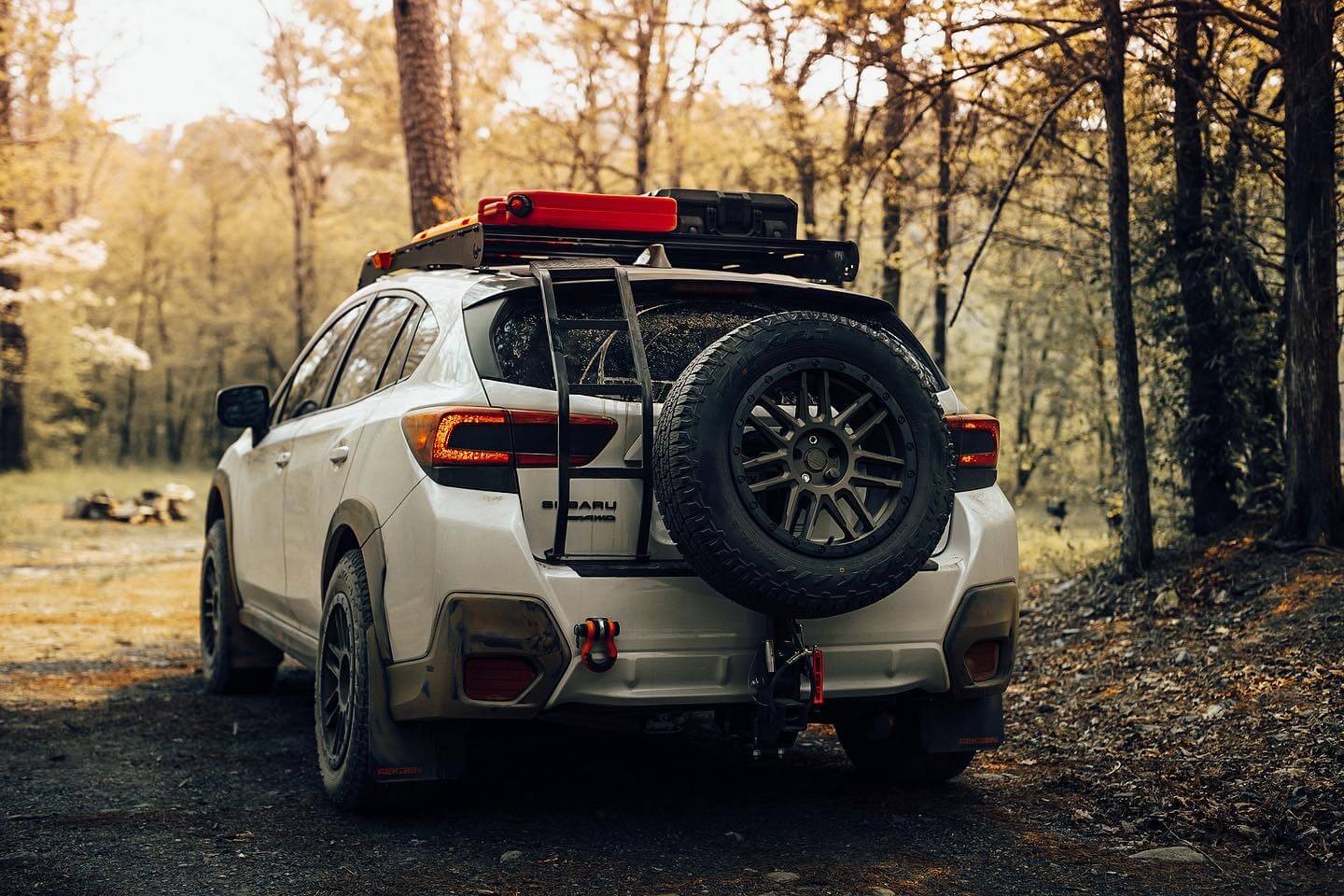
Go easy on the throttle.
Strategic throttle control applies to not only lifted Subarus, but cars of all types. By avoiding hard acceleration you can avoid MPG loss and increase the overall life of your drivetrain. Rapid acceleration puts unnecessary load on your engine and burns more fuel to reach the same speed as gradual acceleration.
When you add oversized tires into the equation, this exacerbates the effects of hard acceleration. When taking off from a stop, you can conserve fuel by lightly increasing the throttle as you gain momentum.
Is it fun to drive “slow” and cautiously? Not really. But we’re not in a hurry to get speeding tickets and safe driving is always the way to go (unless you’re on the trails, then taking some risks is fun!)
Use the right fuel.
If your Subaru’s owners manual recommends premium fuel (most turbocharged models and 6 cylinders require premium) it’s a good idea to follow the recommendation. You’ll get better gas mileage and avoid potential wear and tear to the motor.
Conversely, if your vehicle only requires regular unleaded, paying extra for premium fuel will provide almost no added benefit.
We occasionally run non-ethanol fuel and it bumps up our gas mileage a few MPG. But it is far more expensive than regular gas. Most newer vehicles run perfectly fine with the regular ethanol fuels.
Hopefully these tips will help you as you begin building your Subie into a lifted adventure machine. If you have any extra tips that we missed on this list, shoot us a message and let us know! We always love hearing feedback from our readers.
Want More Helpful Articles? Check These Out:
As an Amazon Associate we earn from qualifying purchases

